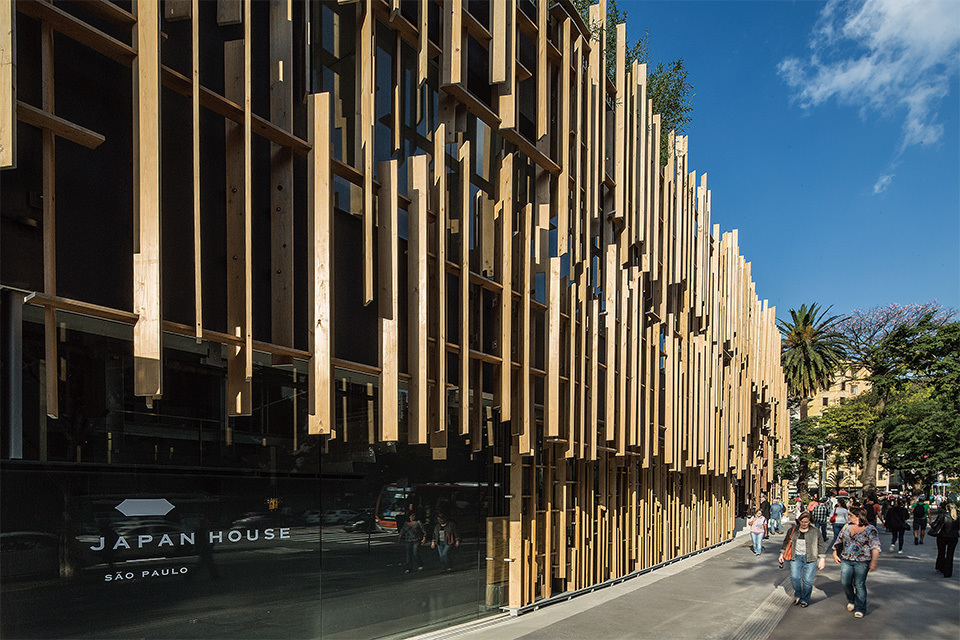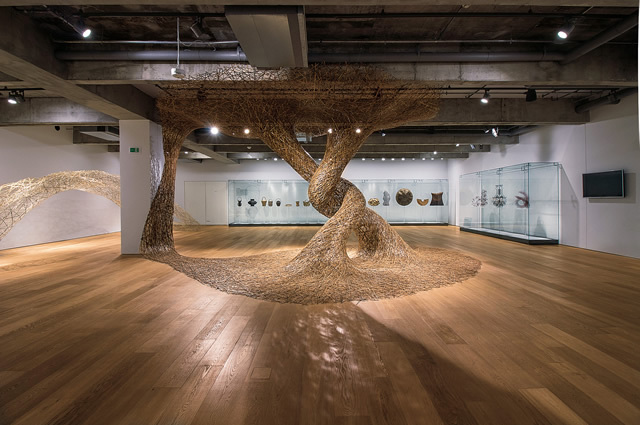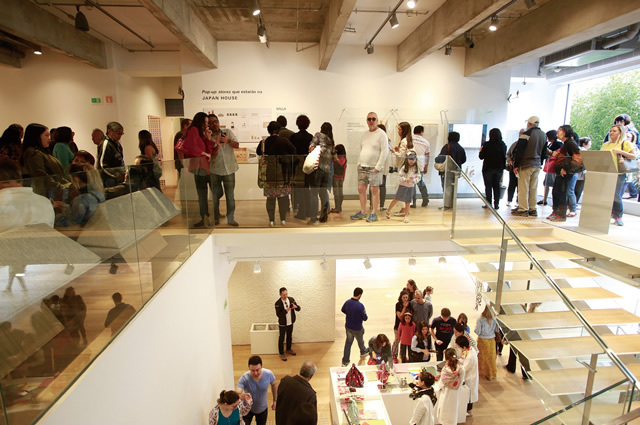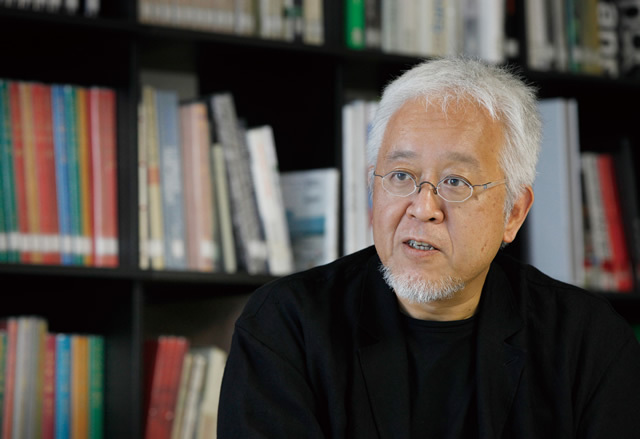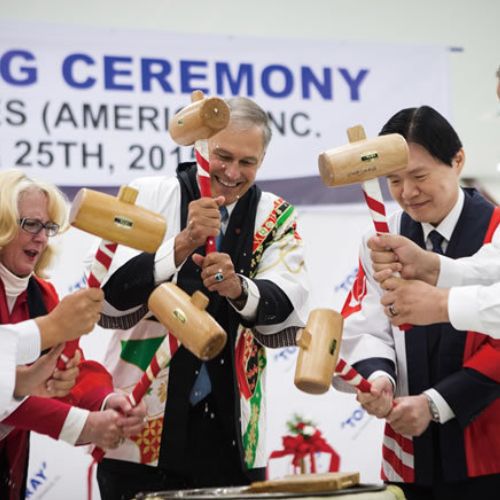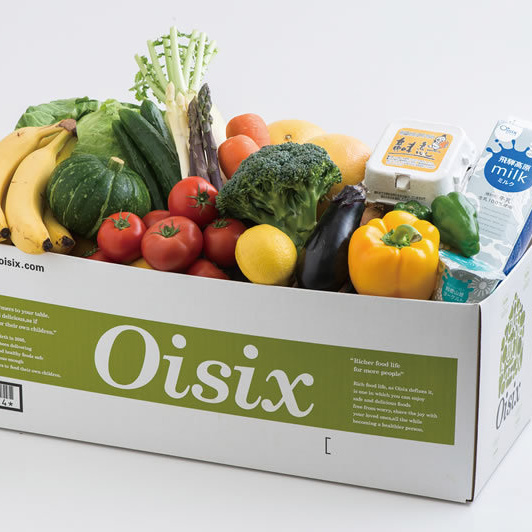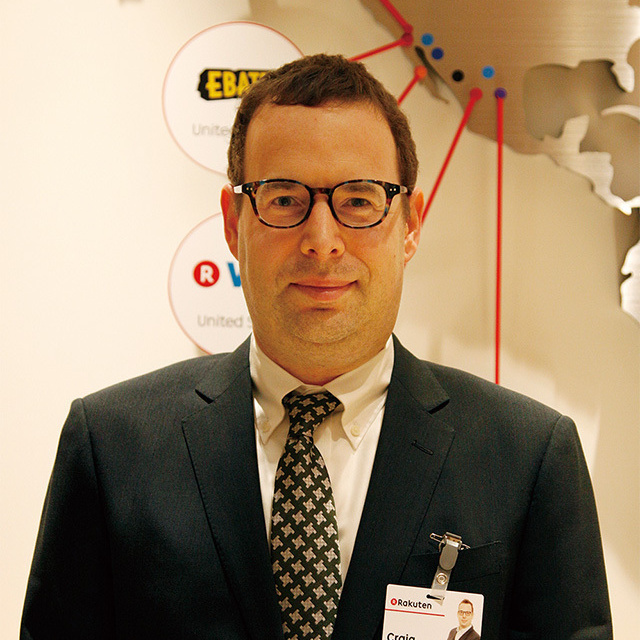On May 6, 2017, the Japanese cultural promotion facility “Japan House São Paulo” opened to the public in São Paulo, Brazil. On May 7, a concert in celebration of the opening was held at the Ibirapuera Auditorium in São Paulo, where an audience of about 15,000 people gathered to watch Japanese musicians Ryuichi Sakamoto and Jun Miyake together with Brazilian musicians Jaques and Paula Morelenbaum.
Kenya Hara, one of Japan’s foremost designers and the Chief Creative Director of Japan House, had this to say about the facility: “Up until now, the facilities and events introducing Japanese culture have often put items like kimonos and ukiyoe prints front and center. These are attractive to the eye, and the people who see them are delighted by their exotic appearances. They seldom arrive at an understanding of their cultural background, however.”
“The objective behind the Japan House,” says Hara, “is to have people understand Japan’s cultural background, to show why and how the Japanese culture—distinctively characterized by intricacy, respectfulness, subtlety and simplicity—came to be. We want visitors to feel not just the surprise of seeing something for the first time, which fades before long; we want to give them the long-lasting impact that comes from true appreciation.”
Japanese Culture Comes Alive at Japan House in São Paulo
JAPAN HOUSE
http://www.japanhouse.jp/en/
“Japan House São Paulo” faces Paulista Avenue in São Paulo. With a Japanese cedar exterior, the facility’s design was supervised by world-renowned architect Kengo Kuma.
The exhibition and multi-purpose space is the center of Japan House São Paulo. Here, an exhibition aiming to deepen understanding of Japanese culture is held once every few months, with a different theme each time. The theme of the first exhibit was “bamboo.” From large art installations to traditional handicraft products that fit in the hand, a wide variety of art works made from bamboo were put on display at the venue. Of particular note is an installation by bamboo artist Chiku’unsai IV Tanabe using toratake bamboo, which has drawn so much attention that it was featured on the front page of a major local newspaper.
The facility itself is also home to a seminar room for events such as lectures and workshops, a shop where fine Japanese handicrafts can be purchased, a restaurant for enjoying Japanese set meals and sake, and places such as a multimedia space and a café where visitors can browse books related to Japan. These areas provide visitors with an opportunity to approach the Japanese culture from a multitude of angles.
The response of the local community has been enormous for this Japanese cultural promotion facility, which serves as an overseas point for communicating “all things Japanese.” In just the first two days of its opening, the facility received about 7,500 visitors, with long lines of people awaiting entry. By one month after the official opening, the total number of visitors had exceeded 90,000, very quickly reaching the facility’s original goal of 60,000 visitors for the entire year. According to Hara, “There is an increasingly global movement that can be felt in which people wish to understand the traditional aspects of Japanese culture with a depth going back nearly two thousand years, together with the modern aspects as well.”
Plans are in the works to open a Japan House in London as well as Los Angeles in 2017. As Japan House grows, it is sure to help more and more people around the world to experience the impact of understanding Japanese culture.
Kenya Hara
Born in Okayama Prefecture in 1958. He graduated from the Musashino Ar t University in 1983 with a Master’s degree in design. In the same year, he joined Nippon Design Centre, Inc. Currently, he is the representative director of Nippon Design Centre, Inc. and the Chief Creative Director of Japan House. His work include the design of the opening and closing ceremony programs for the Nagano 1998 Winter Olympic Games and the official poster of EXPO 2005 Aichi, Japan.


























